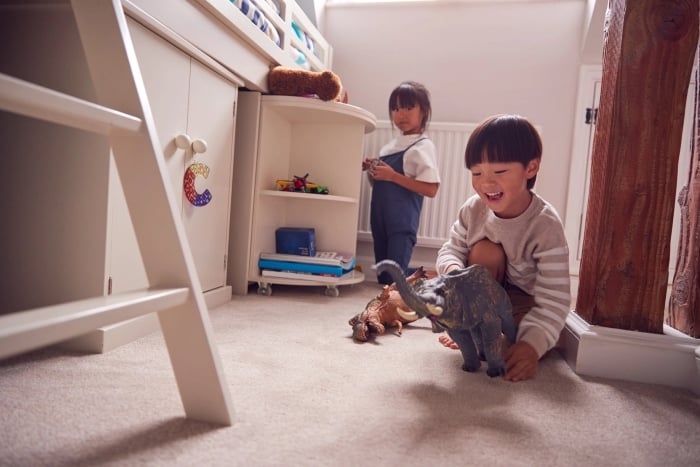Below are six key moments when parents should focus on teaching their children independence:
At 3 years old, encourage self-feeding
Psychologists suggest that by one year old, children have developed their grip. At this stage, parents should introduce simple finger foods like well-cooked vegetables or soft potatoes to encourage self-feeding and develop their fine motor skills.
Depending on their developmental stage, parents can choose appropriate activities. The ideal age to teach self-feeding is between 2 and 3 years old. Avoid having your child eat while sitting in a stroller or on the floor, as this may distract them, leading to slower eating and potential fussiness.
Consider investing in a child-sized table and chair set to encourage independent eating. This practice will benefit both your child and make your life easier when they start school.

Encourage self-feeding at 3 years old. (Illustrative image)
At 5 years old, teach them to fall asleep independently
In addition to eating, consider having your 5-year-old sleep in their own bed. They might feel scared or cry at first, so be patient and offer comfort until they fall asleep. You can also share stories about brave children who sleep independently to inspire them.
At 6 years old, guide them towards independence in the bathroom
Some parents may feel their children are too young to understand privacy, but this is a misconception. At this age, teach them how to bathe independently, including using the showerhead and locking the door. Always adjust the water temperature before they step in to avoid scalding.
At 8 years old, emphasize independence in their personal space
By this age, your child likely has their own room. Respect their privacy by knocking before entering. This simple act shows your child that you acknowledge their personal space and teach them to expect the same respect from others. Guide them in organizing their room without being overly controlling, allowing their creativity to flourish. Remember not to snoop through their belongings or diary.

At 8 years old, encourage independence in their personal space.
At 12 years old, introduce them to the kitchen
It’s essential to teach your pre-teen basic kitchen skills and cooking. Show them how to use kitchen appliances and prepare simple meals. Involve them in grocery shopping and cooking processes, and ask for their input on seasoning. This is also a great opportunity to bond and discuss their daily life, school experiences, and friendships.
At 13 years old, encourage participation in household chores
While it may be quicker to do chores yourself, involve your teenager to foster a sense of independence, responsibility, and sharing. Assign age-appropriate tasks like cleaning, doing the laundry, or washing dishes. This prevents a sense of entitlement and ensures they can take care of themselves when they live independently.
Learning Tips for Parents: 12 Japanese Techniques to Use with Your Children
Discover the 12 principles of teaching children in the traditional Japanese way that parents can learn with Dien May XANH! By instilling these principles when your children are young, you can ensure that they grow up to be obedient, smart and polite, the hallmarks of a successful education in Japan.
“Creating Lasting Memories: 10 Tips for Strengthening the Father-Child Bond”
Are you looking for effective ways to create a strong and close relationship with your child? If so, this article is for you! Find out 10 creative ways to nurture the father-child bond and make the relationship between you and your child more meaningful. These simple tips can help you create a special bond with your child and build strong emotional ties.





































